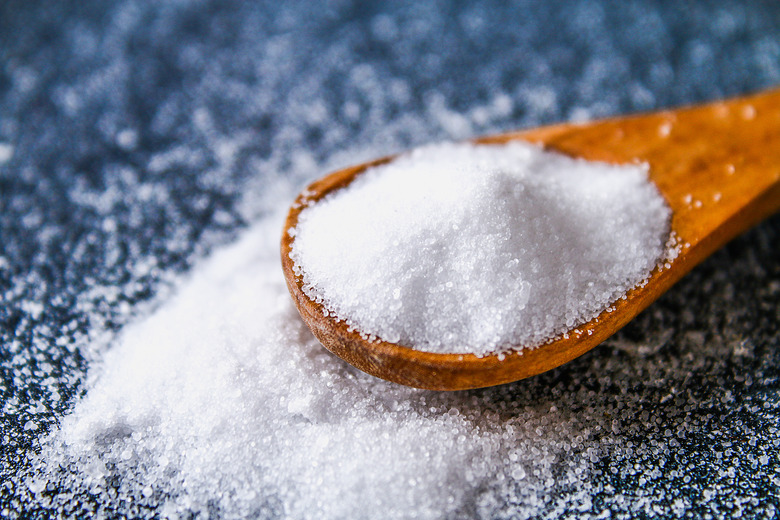How To Make Sodium Chlorite
Sodium chlorite is used commercially to bleach fabrics and paper and to purify and disinfect municipal water. Homeowners use sodium chlorite as an anti-fouling agent for water and a precursor for other flammable or explosive chemicals. There are many different ways to make sodium chlorite. Commercially, chlorine dioxide is added to sodium hydroxide and hydrogen peroxide. For the home chemist, table salt is added to water for a saturated solution, then electricity is applied to bond the O2 from the water to the salt. Some people like to add battery acid or another caustic agent to speed up the process, however, this can result in an unstable, explosive solution.
Making Sodium Chlorite
Step 1
Pour 3 quarts of water into a wide-mouthed, heatproof glass jar or glass beaker and heat to just under boiling.
Step 2
Add the 1/2 cup of salt to the water; continue heating the mixture until the salt is completely dissolved. Remove from heat when the salt is dissolved.
Step 3
Sharpen both ends of the pencils until you have at least 1 inch of exposed lead on both ends.
Step 4
Attach the wires to one end of each pencil with the alligator clip. Make sure the clip is only gripping lead.
Step 5
Tape the cardboard to the mouth of the glass jar or beaker.
Step 6
Punch holes in the cardboard an inch in from the sides of the jar. Insert the ends of the pencils without the alligator clips into the holes and push into the jar until the exposed lead is submerged in the salt/water mixture.
Step 7
Attach one alligator clip to the negative terminal and the other alligator clip to the positive terminal of the battery or the solar panel. This provides the electrolysis which turns the NaCl to NaclO2. Wait at least 16 hours before disconnecting the electrolysis.
Step 8
Disconnect the alligator clips from both the battery or solar panel and the pencils. Remove the pencils and cardboard from the glass jars.
Step 9
Line the funnel with a coffee filter and place in the plastic container. Pour the salt/water mix through the coffer filter-lined funnel. The sodium chlorite will be caught by the coffee filter.
Step 10
Remove the coffee filter from the funnel and gently place on a wire drying rack with the side that had the salt/water mix poured on it up.
Step 11
As the coffee filter drys, sodium chlorite crystals form. You can gently scrape the crystals from the coffee filter into a storage container.
Things Needed
- Safety goggles
- Gloves
- Glass beaker or heatproof wide-mouthed jar
- 1/2 cup of table salt
- 3 quarts of water
- Heat source
- 9-volt battery or solar panel with voltage greater than 1.5 volts
- 2 pieces of electrical wire approximately 12 inches long with attached alligator clips at each end
- 2 #2 pencils with erasers and metal holders removed
- Pencil sharpener
- Piece of cardboard that fits over the mouth of the jar
- Electrical tape
- Sharp knife
- Coffee filter
- Funnel
- Heatproof plastic container
- Wire rack
TL;DR (Too Long; Didn't Read)
You can speed up the electrolysis process by keeping the salt/water mix warm.
References
Cite This Article
MLA
Writer, Contributing. "How To Make Sodium Chlorite" sciencing.com, https://www.sciencing.com/make-sodium-chlorite-5188671/. 17 July 2009.
APA
Writer, Contributing. (2009, July 17). How To Make Sodium Chlorite. sciencing.com. Retrieved from https://www.sciencing.com/make-sodium-chlorite-5188671/
Chicago
Writer, Contributing. How To Make Sodium Chlorite last modified March 24, 2022. https://www.sciencing.com/make-sodium-chlorite-5188671/
